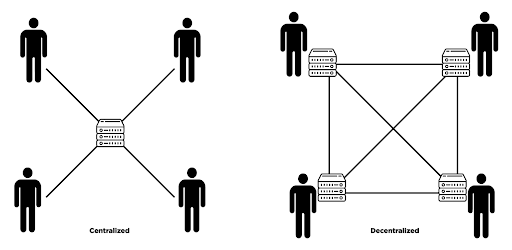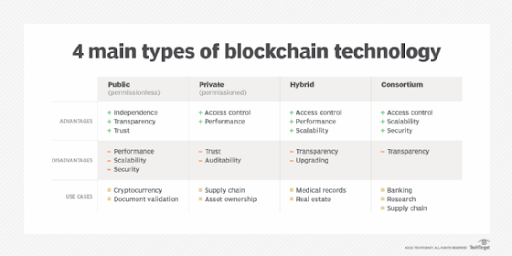Understanding blockchain technology and its principles can be an intimidating task for newcomers. Blockchain remains one of the most popular technological advancements of this century. But have you ever wondered why it is called blockchain? And what happens when the number of transactions grows beyond the existing blockchain size? To understand all this, it is necessary to understand how blockchain architecture works. The global blockchain market is set to grow to nearly $163 billion by 2027. This is due to the ever-increasing adoption of the technology.

Understanding The Blockchain Architecture
A blockchain architecture comprises four major components:
- Transaction
- P2P Network
- Block
- Consensus Algorithm
The concept of blockchain was first coined back in 1991 by a group of researchers trying to create a tool to timestamp digital documents so that they could not be backdated or changed. However, it was after the creation of Bitcoin, the world’s first cryptocurrency, that blockchain gained widespread popularity.
The blockchain serves the purpose of storing, tracking, and managing transactional data in a shared ledger that is completely decentralized. Since blockchain uses distributed ledger technology (DLT), data stored in the block is immutable, i.e., can’t be tampered with, changed, or modified. This is why blockchain is an extremely secure and hack-proof storage method.
Blockchain Vs Database
Since blockchain’s key purpose is storing transactional data, comparing it with the traditional database can present a clearer picture. If we look at the architecture of the world wide web, it uses a client-server network and is centralized. In a traditional database, the server is the brain of the network and holds all the critical data. In comparison, blockchain is fully decentralized, and data is shared between different nodes in the network. There is an absence of a centralized network. All this is possible due to the game-changing distributed ledger technology (DLT).

Source: W3BT
Blockchain comprises a series of blocks storing transactional data in a particular order. There are two main data structures in the blockchain architecture:
- Pointers: Pointers are variables that store information about the location of another variable. As the name suggests, these variables ‘point’ to the position of another variable.
- Linked Lists: Linked lists refers to a sequence of blocks, with each block storing specific data. In a linked list, each block links to the next block with the help of a pointer.

One can notice that the pointer value in the final block is null. Since there is no block after the final block, it has nowhere to point to.
Now, there are different types of blockchain architectures that serve different purposes. These are:
- Public Blockchain
- Private Blockchain
- Consortium Blockchain
- Hybrid Blockchain

Source: TechTarget
Major Components Of The Blockchain Architecture
- Node: If we take blockchain as an interconnected computer network, a node is the smallest unit of that network. A node refers to an individual or a computer in the blockchain network. Each node has an independent copy of the entire blockchain ledger.
- Transaction: Transactions are the first purpose blockchain exists to fulfill. A transaction is the basic building block of the blockchain architecture.
- Block: Block is a decentralized data structure that stores a set of transactions in a network.
- Chain: Chain specifies the sequence in which individual blocks are arranged in the blockchain.
- Miners: Miners are specific nodes within the network that verify and add new blocks to the blockchain. The process of adding a new block is called mining. Miners get a certain amount of Bitcoin in exchange for adding new blocks. They use certain algorithms like proof-of-work (PoW) for mining.
- Consensus: Consensus is the name of the protocol or mechanism that dictates how different blockchain operations are performed. The nodes in the blockchain architecture have a say in this mechanism.
The Process Of Creating A Blockchain Network
Creating a blockchain network is a complex task and requires strong technical knowledge. The approach depends on the end goal. From businesses to legal enterprises, several industries are switching to blockchain architecture for faster, more efficient, and more secure operations. Blockchain architects are usually computer science geniuses with a strong hold over programming languages like C++, Python, Java, C, etc. The rise of platforms like Ethereum has made blockchain creation more convenient. However, you must consult an expert to evaluate the requirements for your blockchain network.

